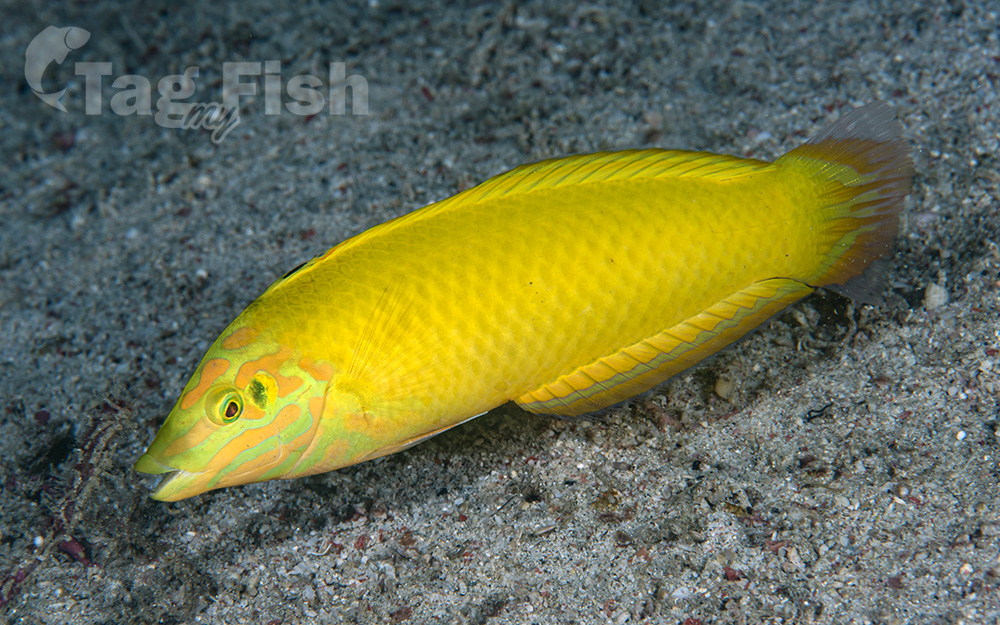Canary wrasse
(Halichoeres chrysus)

Classification
General data
The canary wrasse is a small fish that can reach a maximum length of 12 cm.
It has a thin, elongate body with a terminal mouth.
Body coloration is bright yellow with a few variations according to age.
Juvenile and immature female have two black spots rimmed with white or light yellow on the dorsal fin (the first one at the start of the fin (head side) and the second in the middle of its dorsal fin) and a third one between the caudal peduncle and the start of the caudal fin.
Mature females or young males only show the two black spots on the dorsal fin.
Mature males display only the first black spot on the front of the dorsal fin, a lighter-colored spot just behind the eye and irregular greenish to pinkish lines on the face.
The canary wrasse is widespread throughout the tropical and subtropical waters of the central Indo-Pacific, in an area bordered by the Christmas Islands and Indonesia, Japan, New South Wales and the Rowley Shoals, and the Tonga Islands and Solomon Islands.
This wrasse occurs on outside reef slopes, in rubble and sandy areas from surface down to a depth of 30 meters.










